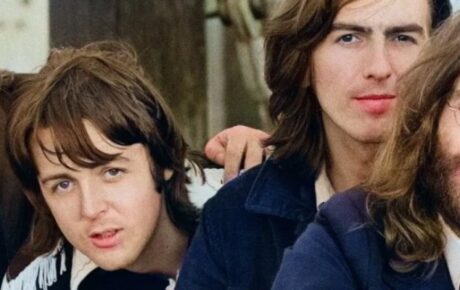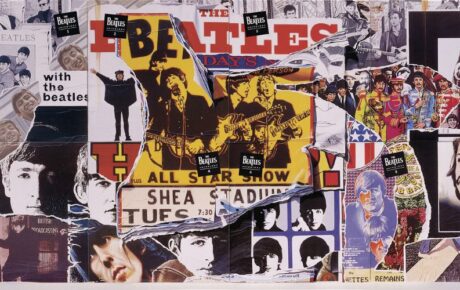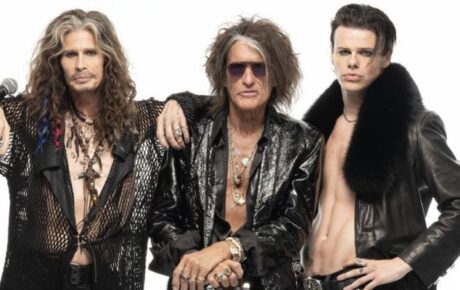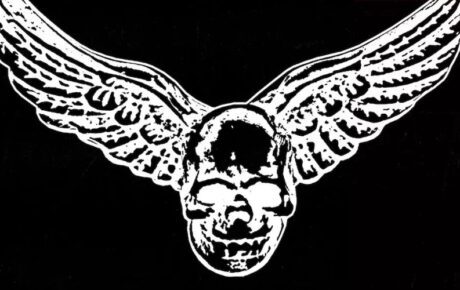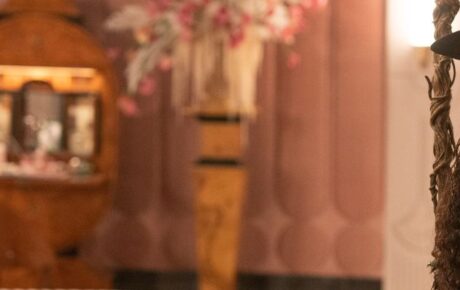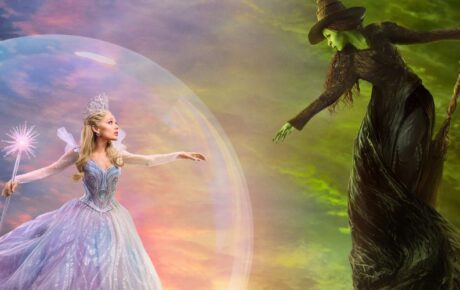Warning: some spoilers ahead!
Across four years in the lead up to the release of Marlon Williams’ first record entirely in te reo Māori, documentary Ngā Ao E Rua – Two Worlds, chronicles Williams’ personal journey in understanding himself, his heritage, and connection with te reo Māori. What audiences find, however, is that it also goes beyond the musician into something shared amongst anyone who calls Aotearoa home. Directed by Ursula Grace Williams, this insightful documentary follows Marlon from the very beginnings of waiata (songs) to their studio recordings, and in between, a most candid look into the artist behind the magic.
Ngā Ao E Rua opens with a quote from Marlon, stating that whenever people ask what he’s been up to, the first thing he says, is he’s writing a new album … the second thing he says, is that it’s going to be entirely in te reo Māori – a strong introduction to his endeavour. Following this the film quickly sets the scene of Marlon’s journey up till now, his rise as a career musician and rigoruous touring of the circuit, something that appears to be taking a mental and physical toll. A montage in quick succession of stages, festivals, and international places finally lands back in Lyttleton, Aotearoa New Zealand. The film does a wonderful job at contrasting Marlon’s two worlds, the touring one with the home life in Aotearoa. Every time we cut back to New Zealand, there is an unmistakable sense of grounding, which juxtaposes the fast pace and demanding touring lifestyle. It’s from his time in Lyttleton that Marlon unpacks this new challenge that he’s laid down for himself, an album entirely sung in te reo, something he’s not fluent in, but something that he says he’s always had a connection with. Marlon shares that te reo and melody have always had an explicit connection that’s felt natural. But this is so much more than just an intellectual challenge, it’s a challenge of identity and belonging.
As the film starts to unfold, we learn more about Marlon’s background. Marlon moved to Melbourne soon after high school and lived there for 10 years. It’s here that his career really took off with his band, the Yarra Benders. As Marlon finds himself playing larger venues and collaborating with the likes of kiwi royalty, Lorde, we gather an understanding that Marlon has finally become a little fatigued and ready to change pace and lifestyle. This all coalesces with the birth of the grand idea to create an album entirely sung in the indigenous language of Aotearoa, all for the purpose of reconnecting to his whakapapa, his cultural connection. The limiting factor to exclusively write lyrics in te reo is instead seen by Marlon as a liberating element of the process. He further explains to the camera that with the language in use, it opens a world of possibility and depth in his songwriting, it unlocks something in him. It is with this mixed competency that we receive a vulnerable collection of moments that illustrate the journey Marlon has taken to create his latest record.
A hallmark of this film is how raw and candid the process appears to be. It feels very organic, which is refreshing for a music documentary. In early scenes of the beginnings of Te Whare Tīwekaweka (the album), we’re introduced to Marlon’s collaborator and friend, KOMMI, who is fluent in te reo. The moments shared between KOMMI and Marlon are effortlessly funny and warm. KOMMI’s contribution to the album cannot be understated, as Marlon’s prime mentor, ensuring the use of te reo Māori is meaningful. Their friendship is one to admire, as for all of Marlon’s social interactions on screen. He seems to be the funniest singer in New Zealand, unapologetically being himself in this film, just owning it. This is where the film breathes vulnerability and authenticity. As we inch further into the writing process, it is perhaps suggested that Marlon feels a sense of awkwardness around not being completely versed in te reo. This might be something that us New Zealand Europeans can relate to in our own journey to understand connection to te reo and our shared home. The film does a tremendous job of making anyone feel welcome on that journey.
The sentiment of this film echoes the translated title of the album, ‘the messy house’. The movie conveys this in both a national sense, but also an individual one. As a nation, this film warmly invites us to come together and connect. A truly magical property of the documentary. This is reflected through Marlon’s personal journey learning te reo, which he is still not fluent in even after writing this album. The messy house represents a dynamic state in which we are as people, but how much positive potential that inherently holds. To Marlon, this album is daring, brave, flawed, not perfect by any means, but it’s a start and an honest one at that. His decision to purposefully include his non-Māori long-time collaborators, the Yarra Benders, during the recording sessions of the LP, is an example of this honesty and representation of reality. Marlon reflects on this being a potentially contentious point, but one that feels steeped in progress. He acknowledges that there’s a fine balance between preservation in doing what is historically right, versus innovation. The footage of the band members in studio down in Haast reinforces this decision. These scenes clearly display the effort these people have put into making accurate pronunciation and heartfelt conviction into what they’re singing. The studio setting seems so pure, it feels like a place beyond time and influence, leaving room for genuine intent.
View this post on Instagram
As for the music itself, the film does a wonderful job of introducing each of the songs from the album in a meaningful cadence, it feels like their placement represents the growing confidence that Marlon feels as he progresses his skills in te reo. The immediate payoff in seeing where Marlon has come from on his own pathway with te reo and identity, is that we can enjoy the music with so much more empathy and connection. There are many other magical musical moments caught on camera in this film. One highlight is seeing Ella Yelich-O’Connor (aka Lorde) in studio with Marlon preparing for their recording of ‘Kāhore He Manu E’. It’s a surreal moment to witness, as the popstar sits down at a piano with Marlon, the two bonding over perfecting key changes. It feels intimate in a way that translates thoughtfully into the final recording of this beautiful single.
The film carefully documents Marlon taking milestones to connect with his tīpuna (ancestors), with one highlight surrounding his visit to his father’s marae in Tōrere, near Gisborne. The visit is met with much welcome to Marlon and depicts a sense of personal growth and renewal as he respectfully addresses the rangatahi (younger generation), about his honest voyage into te reo. And of course, we couldn’t forget the scenes with Marlon’s mother in a bach on the West coast of the South Island. This one contrasts the vibrancy of Marlon’s journey to date and perfectly reflects his notion of slowing down. The silence and naturally serene setting allow for us to sense Marlon’s homecoming.
Homecoming is ultimately the resulting feeling of this documentary. And in the last few chapters of the film, where the songs are piecing together in the studio in Haast, it feels warm, peaceful, and well, Kiwi. The lush green surroundings and the modest hall in which the band record, is something of a hallmark of Marlon’s being. He’s like any other person, finding their way back to their deepest roots to understand themself. Removed from a demanding and noisy society, this place where the band put the music to tape, feels like home. The shots create the sort of content that can only be felt around the people and places which evoke this sense of home. Ursula does this in such a carefree way, that doesn’t seem staged, but instead, entirely fluid and organic. This is what really makes the documentary one to watch, in a time that might be fraught with many societal struggles, this movie provides a moment of unparalleled Kiwi casualness and reflection of culture that reminds us of who we are as a people together. Our shared culture, our beautiful whenua and how we can all feel a sense of pride in coming home to Aotearoa New Zealand. Powerful stuff, watch it to see for yourself!
With this film, Ursula Grace Williams successfully shines a light on Marlon’s being. His aura and energy are unmistakably authentic and warm for someone of his notoriety. But perhaps what this film does most successfully is help us all connect. It helps us connect with the whenua, our whanau, language, music and ourselves. The visual depiction of Marlon’s journey to get in touch with individual identity is inspiring, humbling and heartwarming, a reminder of what we’re all capable of venturing into ourselves. It seems like any Kiwi will be able to get something from this film, especially a sense of place and connection to our beautiful land. Marlon describes the film as the pure joy in exploration of identity and self, and that is exactly the feeling we walk away with – what a pleasure this watch is.





